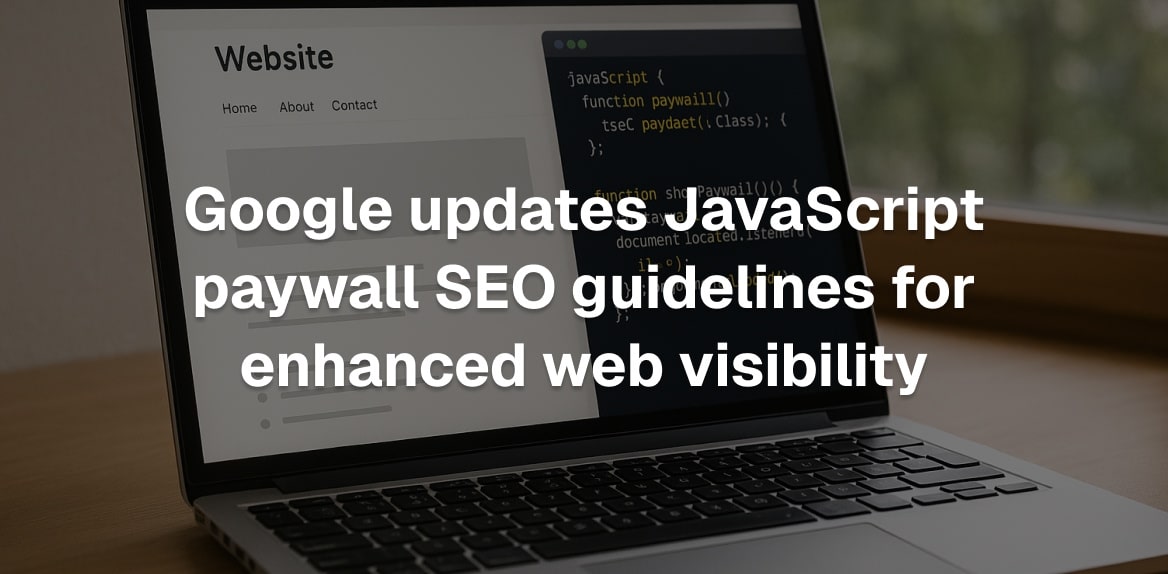
In a bid to address ongoing challenges in the digital publishing landscape, Google has revised its guidelines regarding JavaScript-based paywalls. These updates aim to help publishers strike a balance between content monetization and maintaining strong search engine rankings. JavaScript paywalls, which restrict access to premium content unless users subscribe, have long posed challenges for ensuring visibility in search results.
Challenges with JavaScript paywalls
The updated guidelines, as highlighted on Search Engine Roundtable, emphasize the importance of ensuring Google’s crawlers can seamlessly access content behind paywalls. Failure to properly implement these interactive barriers can result in search bots being unable to index content, potentially leading to lower rankings.
This issue is particularly significant as publishers have reported traffic declines when paywalls prevent bots from accessing their articles. The complexity of JavaScript-based paywalls can exacerbate these problems, as improperly executed scripts may prevent search engines from fully understanding a webpage’s content.
Using structured data to improve SEO
To mitigate these risks, Google encourages publishers to use structured data markup for paywalled and subscription content. By doing so, publishers can inform search engines about the presence of paywalls while still providing enough information for indexing and snippet generation. Specific details about this approach are outlined in Google’s developer documentation on Google Search Central.
Industry experts have underscored the importance of these measures, particularly in light of Google’s recent algorithm updates, such as the August 2025 Helpful Content Update. This update prioritizes user-centric experiences, making it more critical for publishers to ensure their content remains accessible to search engines. Commenting on Google’s revised guidance, SEO specialist Barry Schwartz noted on the platform X (formerly Twitter) that improper application of these paywalls may lead to “Google Zero” scenarios, where traffic plummets significantly.
Addressing accessibility and user experience
While paywalls are essential for generating revenue, they also raise concerns about accessibility. According to a 2025 guide from All About Cookies, some users bypass these barriers using tools like VPNs or browser extensions, creating a cat-and-mouse dynamic between publishers and users. This can ultimately affect how Google evaluates a site’s authority, as indicated in internal insights shared by SEO consultant Aleyda Solis on X.
To harmonize monetization with accessibility, experts recommend strategies such as soft paywalls, which allow users to view parts of an article or access a limited number of free articles. These approaches align with Google’s advocacy for broader accessibility and user-friendly web experiences, as reflected in its recent algorithm updates.
The future of paywall optimization
The growing sophistication of JavaScript paywalls demands robust SEO strategies to avoid jeopardizing discoverability and conversion rates. A report from State of Digital Publishing highlights the need for publishers to optimize their paywalls to ensure they do not negatively impact rankings. Factors like page speed, which can be affected by paywall scripts, also play a significant role in Google’s ranking criteria, particularly with Core Web Vitals in focus.
As the integration of AI in search continues to evolve, publishers may face additional challenges in ensuring their paywalls are compatible with search engine bots. Future-proofing strategies like server-side rendering or alternative content delivery methods are becoming increasingly important.
Ultimately, as Barry Adams from SEO for Google News highlights, “while paywalls are indispensable for revenue generation, their mismanagement may lead to SEO setbacks.” Google’s updated guidelines offer a valuable roadmap for publishers navigating the competitive digital publishing ecosystem, helping them achieve both visibility and sustainability in their business models.
